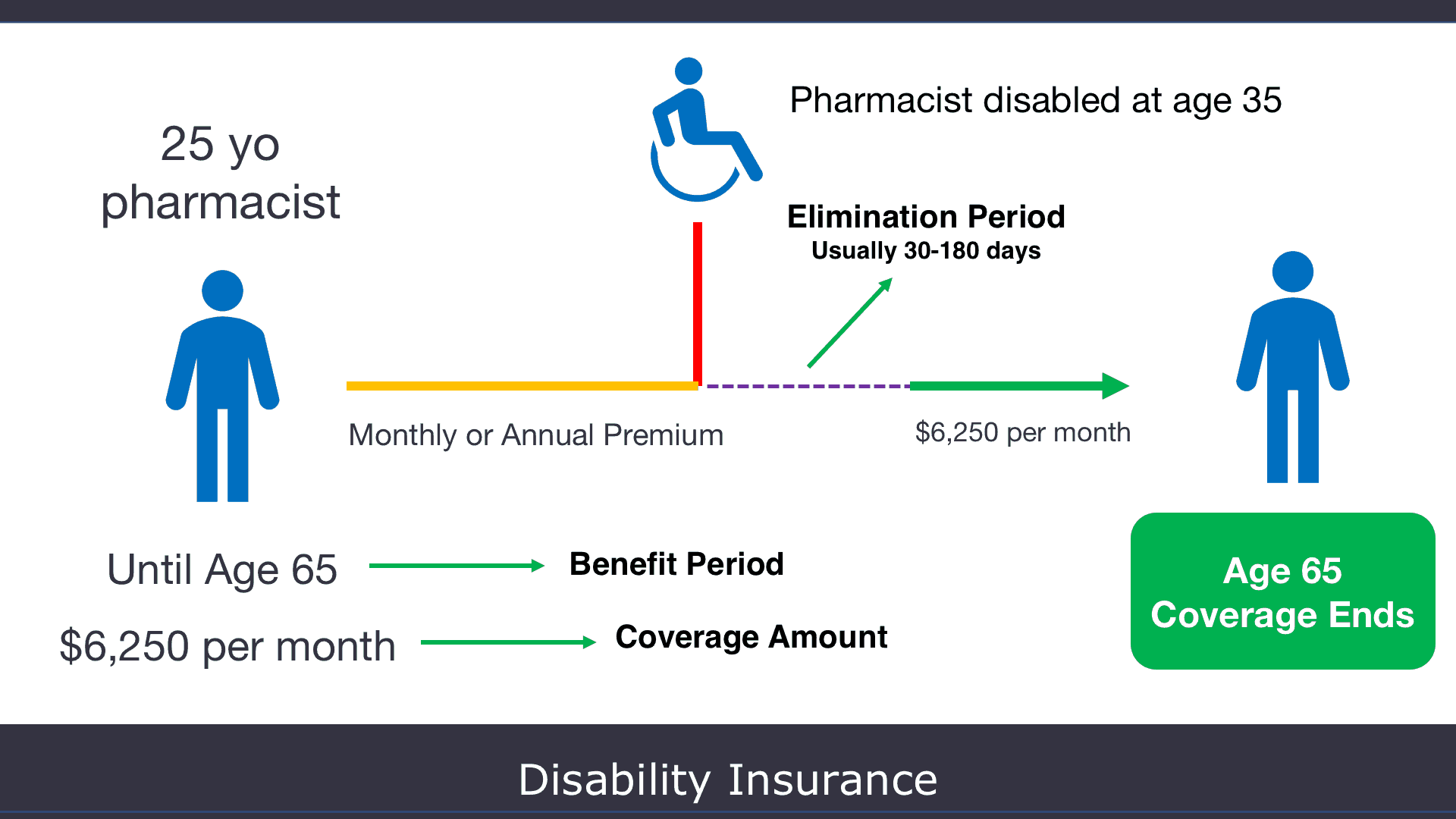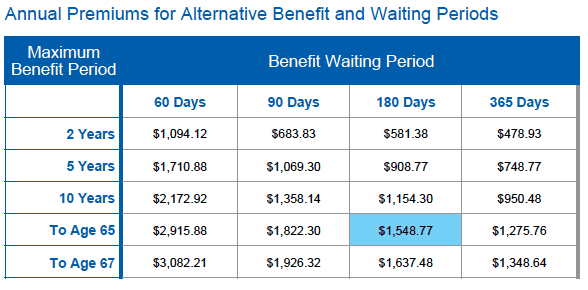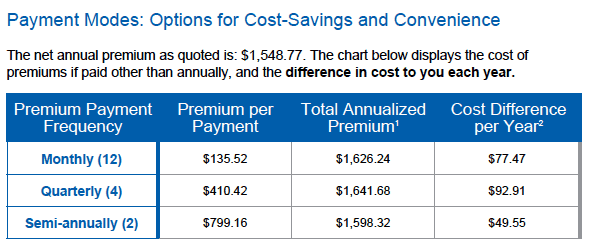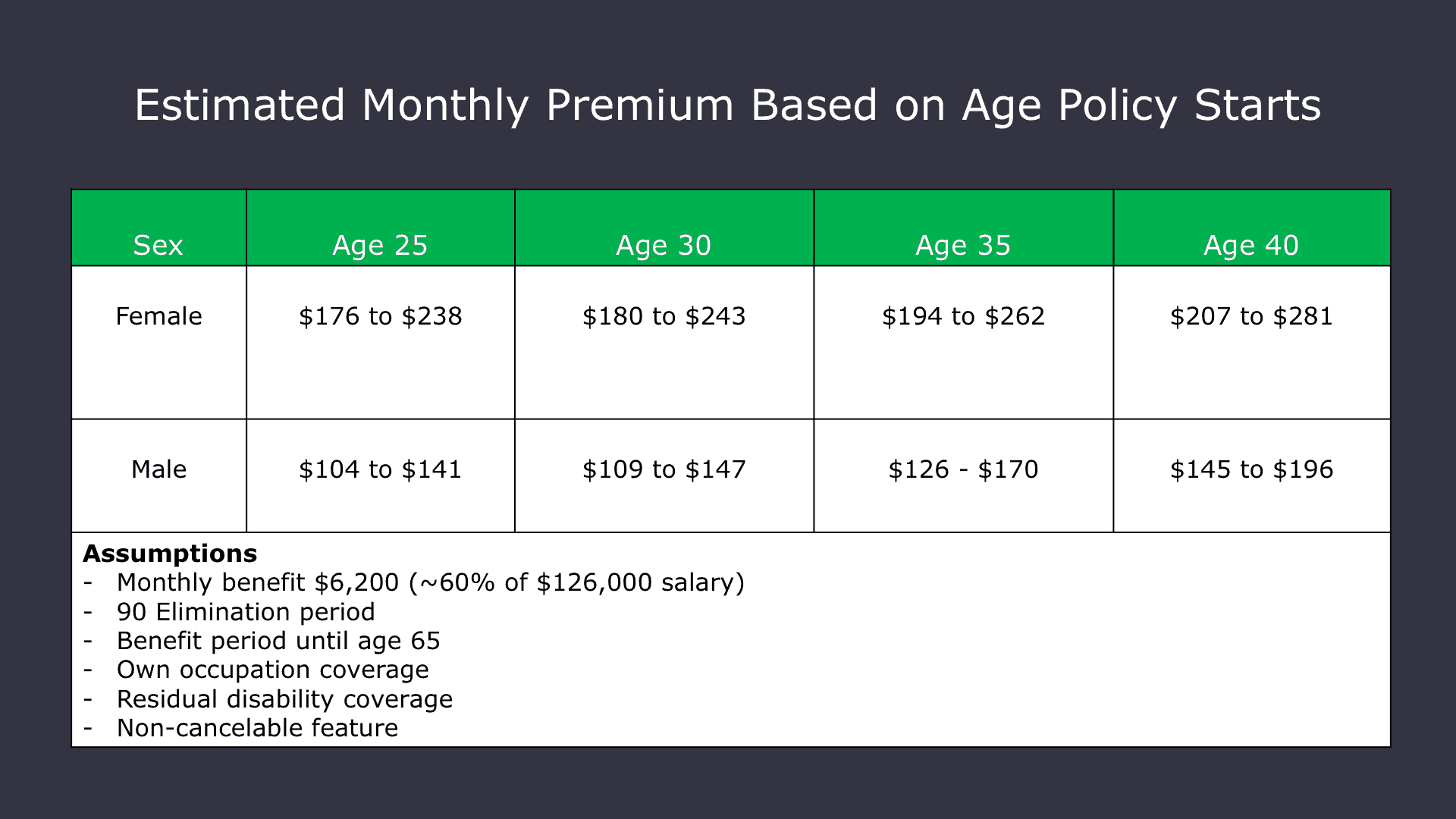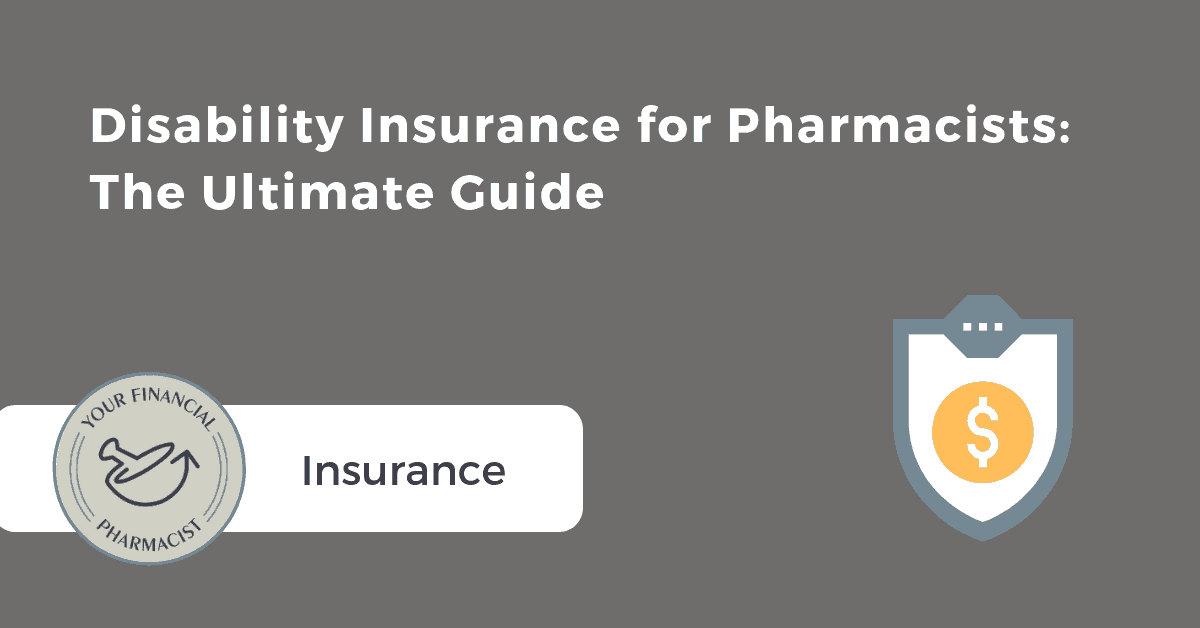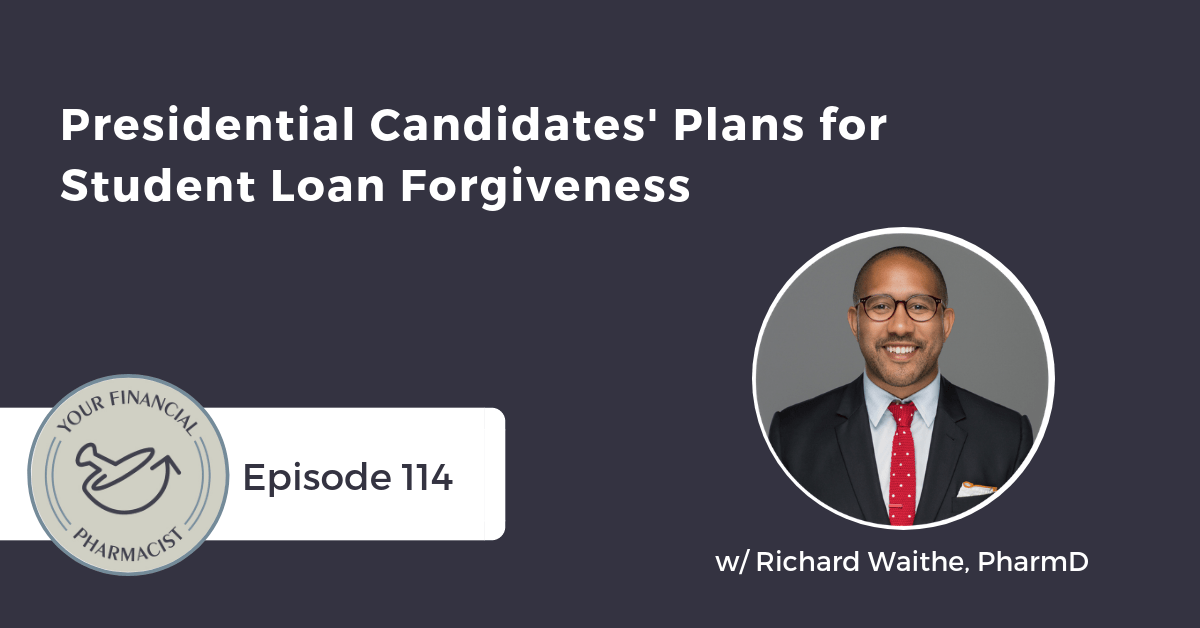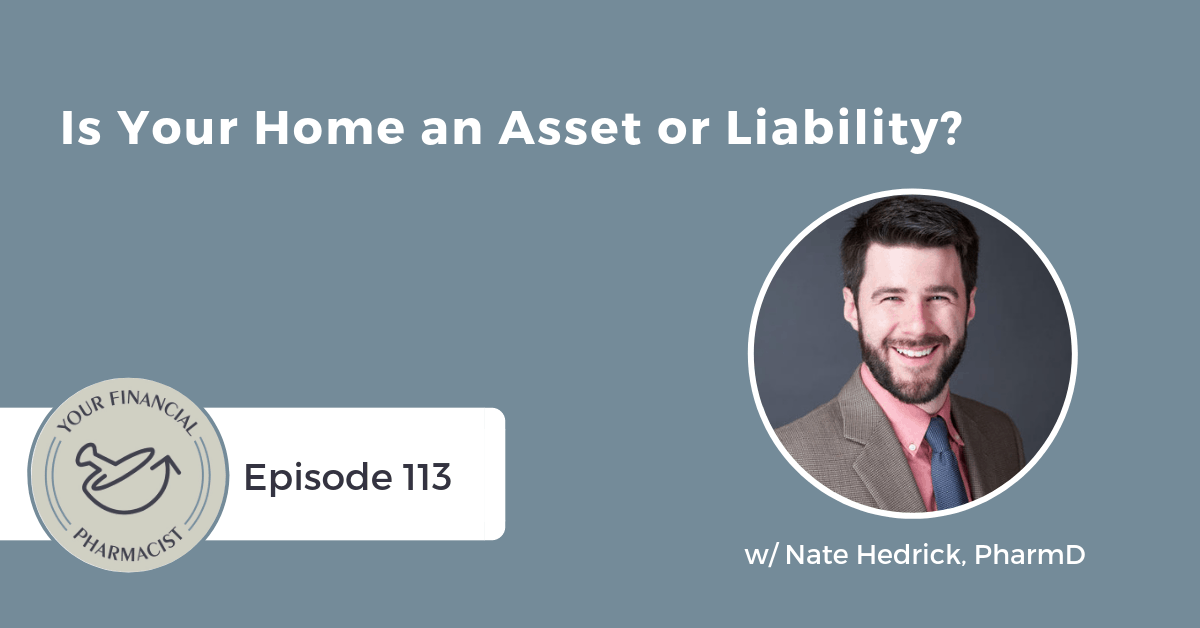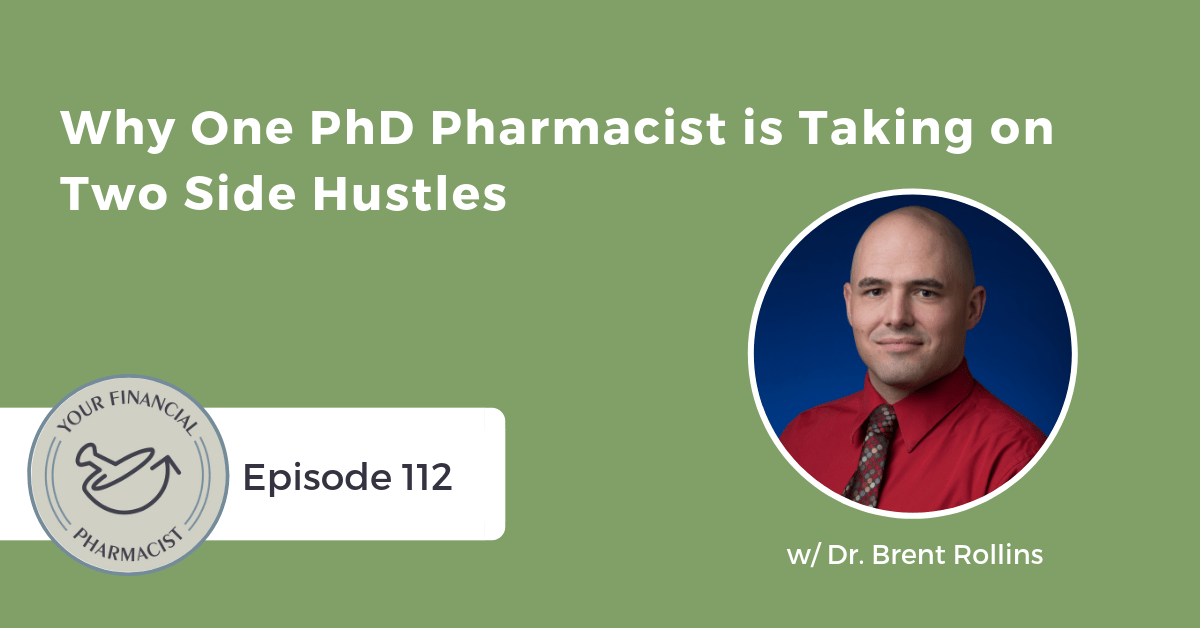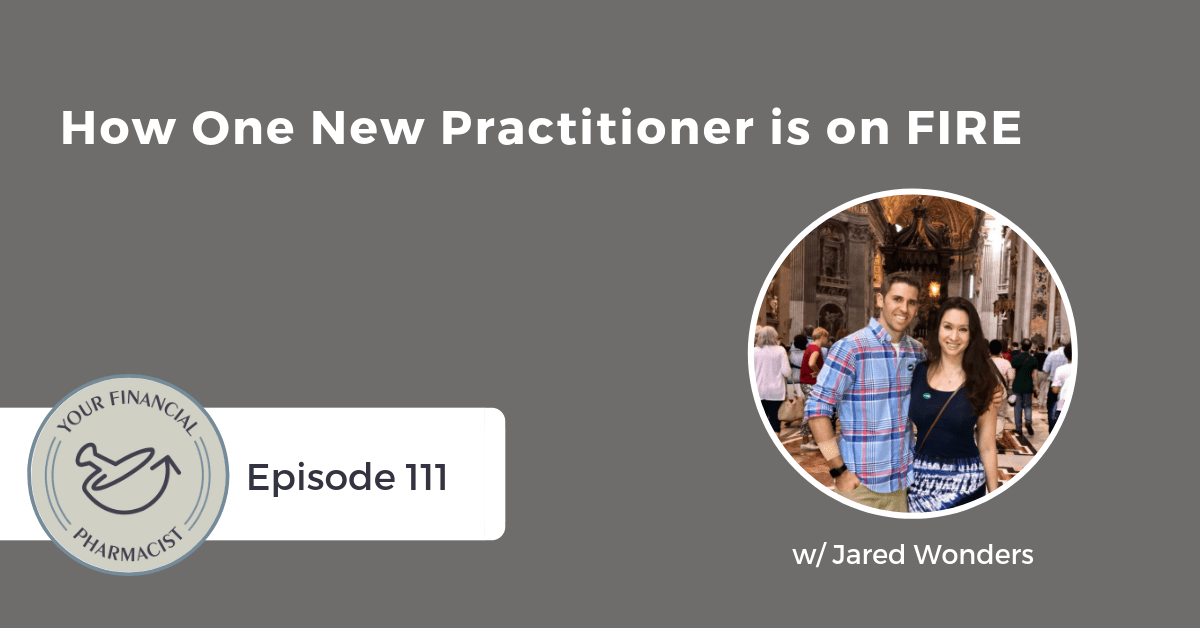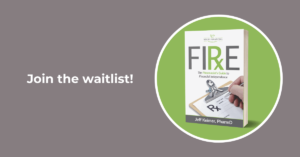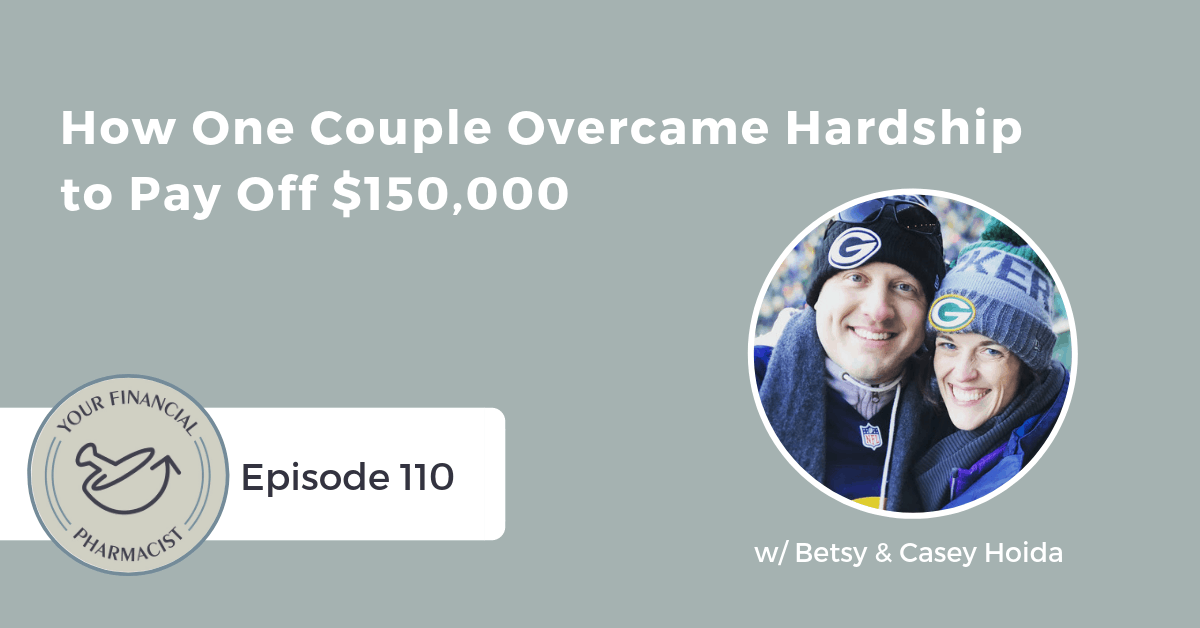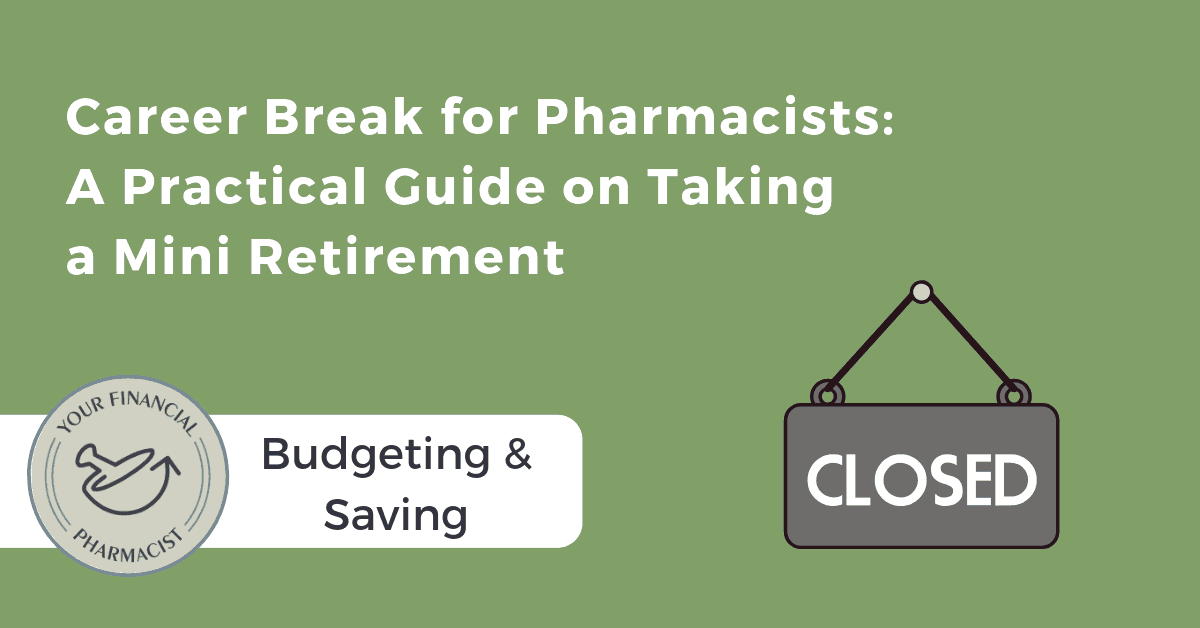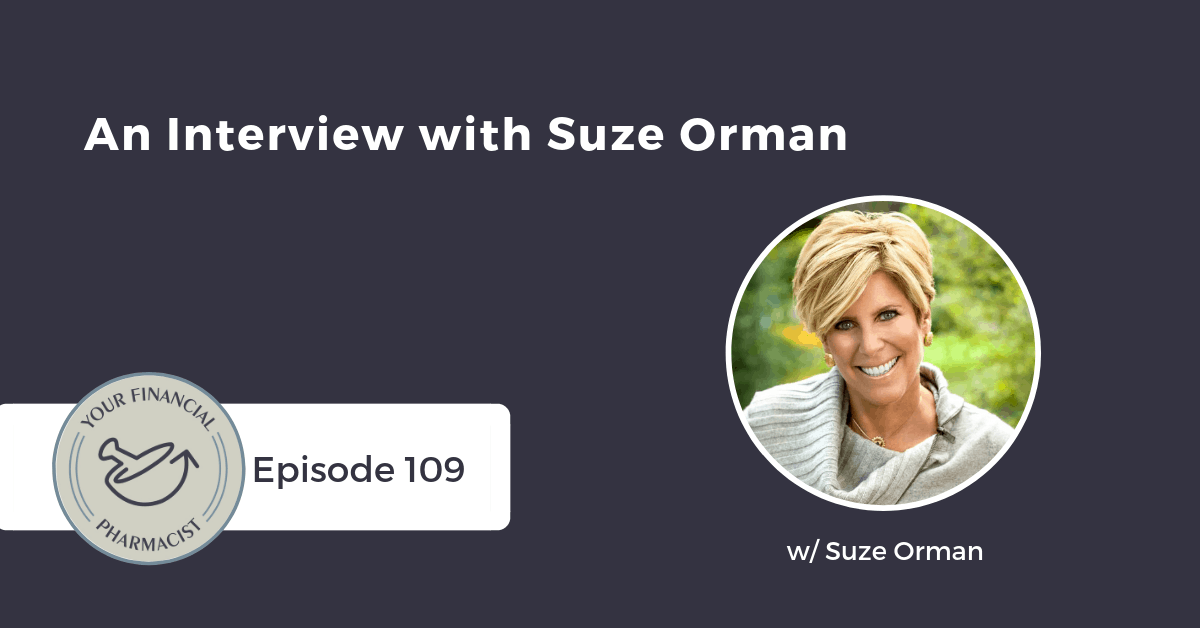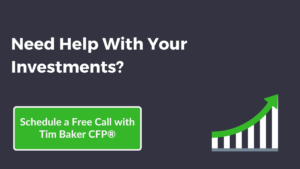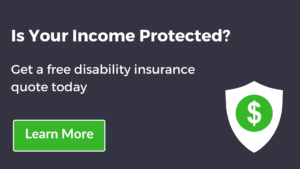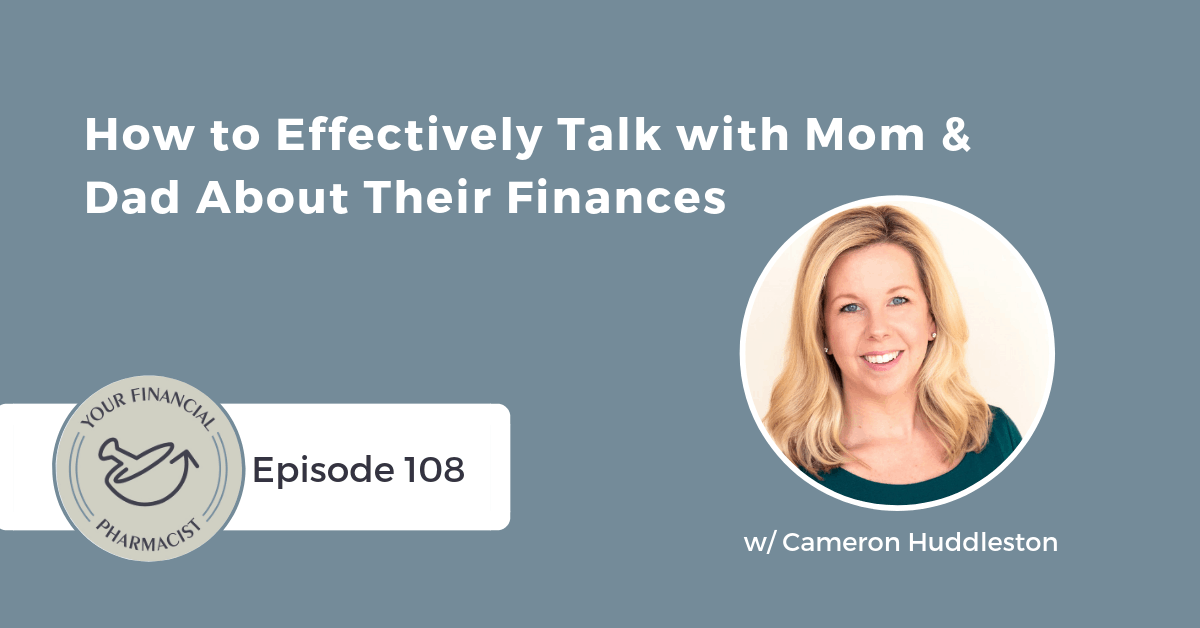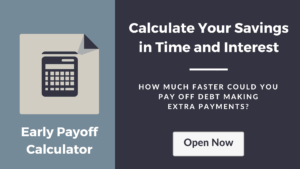Presidential Candidates’ Plans for Student Loan Forgiveness
On this episode, Tim Ulbrich and Richard Waithe, the creator of RxRadio, talk through the student loan forgiveness plans proposed by Senators Bernie Sanders and Elizabeth Warren, two of the 2020 presidential candidates. Tim and Richard discuss the details of who would and would not receive forgiveness under these plans and how they would be funded if enacted. They also discuss current loan forgiveness plans that are already in place and options that are available for those that need to delay loan payments due to a financial hardship such as a job loss or reduction in hours.
This episode originally aired in July 2019 on the RxRadio Podcast. You can learn more about RxRadio by visiting rxradio.fm.
About Today’s Guest
Richard Waithe, PharmD, is passionate about patient engagement and advancements in technology that improve adherence and health literacy to ultimately improve outcomes. With years of experience on the front lines in community Pharmacy, Richard is committed to helping individuals better manage their health and medications.
He is currently the President of VUCA Health, a company that has the largest library of medication education videos that serves to enhance patient engagement and provide an on-demand extension of pharmacists and other healthcare providers. He is also the host of the Rx Radio podcast where he interviews Pharmacists practicing in a vast variety of fields and discusses the future of our profession. Richard is the author of the book First Time Pharmacist: Everything you didn’t learn in school or on-the-job training.
Summary
This week’s episode is a simulcast release of a RxRadio episode. Tim Ulbrich joined Richard Waithe on the RxRadio Podcast to discuss Bernie Sanders and Elizabeth Warren’s proposals to cancel student loan debt.
Tim first dives into Bernie Sanders’ proposal, which is part of a more comprehensive college for all program and includes free tuition for public and private schools, the most ambitious plan yet. Bernie’s proposal is available to 45 million student loan borrowers, can be used for both federal and private loans, and has no eligibility differentiation as Warren’s does. Bernie is also proposing that interest rates should be capped at 2%. This debt cancellation will be funded by a Financial Transaction Tax which adds a .5% tax on stock trades.
Elizabeth Warren also has proposed a plan to cancel student loan debt, however, hers carries a few restrictions. This plan would cancel debt for about 95% of student loan borrowers. It would cancel $50,000 of student loan debt for households making $100,000 or less. The proposal offers phase out provisions: for households making $100,000-$200,000, borrowers can receive $1 forgiveness for every $3 of income. For example, if the household income is $130,000, $40,000 would be cancelled; if the household income is $160,000, $30,000 would be cancelled; and if the household income is $250,000, you would be excluded from receiving any student loan debt cancellation.
If these candidates aren’t elected or these proposals or similar ones don’t go through, there are forgiveness options that are available now. The first option is to pursue PSLF (Public Service Loan Forgiveness) which 25% of pharmacy graduates qualify for. To obtain PSLF forgiveness, you must work for a qualifying employer, have a qualifying plan, work full-time, and make 120 payments over 10 years. If you fulfill all of the requirements, your remaining loan amount will be forgiven tax free.
Non-PSLF is also an option for forgiveness. With this program, the borrower can work anywhere and makes payments over 20-25 years. However, the forgiven amount will be taxable and can be a hefty bill that you have to plan for. This program is best suited for those with a high debt to income ratio. Lastly, there are several state and federal forgiveness plans that you could qualify for.
So, if these proposals go through, what do you do with the extra money? Tim suggests that you first need to articulate your financial goals and prioritize them. First, you should focus on building up your emergency fund and paying off credit card debt. Then, you can focus on putting money toward retirement savings, home savings, college, vacations, etc.
Mentioned on the Show
Episode Transcript
Richard Waithe: Tim, how’s it going?
Tim Ulbrich: Good, doing well. Thanks, Richard, for having me on the show. I love what you’re doing over at RxRadio.
Richard Waithe: I appreciate the kind words. I am excited to have you on because one, I’ve heard obviously great things about you from Your Financial Pharmacist that we had on here. So we heard a little bit about your background, but we’ll hear a little bit again that part from you as to like how things got started, but just to give a little preface to what the episode today is going to be like, the news with the presidential candidates and their debt cancellations, I immediately thought about what your organization, Your Financial Pharmacist, and how things like this could potentially impact people’s financial plans. So you guys immediately came to mind, so I want to chop it up with you to dive into it, get some ideas, get some exact facts as to what it is that’s going on. But before we do that, if you could just start off by telling the listeners a little bit about yourself.
Tim Ulbrich: Absolutely, Richard. Yeah, great topic, excited to jump in the conversation. So I graduated with my PharmD from Ohio Northern University in 2008, did my community residency also alongside academia at The Ohio State University in 2009, and then for about 10 years, I was up in Northeast Ohio Medical University in the Akron-Cleveland area in various roles, patient care, service development, ambulatory care, community care, did some administrative work in admissions and student affairs and really developed a passion for professional development and helping students identify their career path and to really help empower them along that path. And that really intersected nicely for me with the financial piece, which really came to be in 2015 with the beginnings of Your Financial Pharmacist. But I started, and of course I know you had an opportunity to interview Tim, and we also have another Tim, hopefully no more Tims in the mix after three.
Richard Waithe: That should be in the rules.
Tim Ulbrich: Yeah, right? But I went through a journey of paying off a couple hundred thousand dollars of debt. Obviously, I’m being casual about that just for the sake of brevity so we can get into the discussion, and really felt like I lived a little bit on an island while going through that journey and didn’t really hear many pharmacists talking about this topic, talking about issues like we’re going to talk about right here tonight. And so I reached out to 100 of my closest colleagues and friends, said, “Hey, I’m thinking about starting a blog around personal finance and pharmacy. What do you think?” And the responses I got to that were really overwhelming and I think incredible for me to hear, OK, others are interested in this. It’s not just for financial nerds, and many people in pharmacy are feeling some of the pressures and pains around personal finance, especially those making the transition from student to new practitioner. So that began Your Financial Pharmacist, which started as a blog. We then launched the podcast the summer of 2017, we just crossed our 100th episode. And we’ve got comprehensive financial planning, lots of resources and tools, all designed to help the pharmacy professional on their path towards achieving financial freedom, which obviously student loans is a big, big part of that. So I think this conversation is timely. And now currently, just this past fall, I transitioned back to Ohio State University, and I direct the Masters and Health Systems Pharmacy Administration. So again, a lot of intersection between professional development. I really see personal finance being a big piece of professional development, and I’m excited that we as a profession are starting to embrace that personal finance is a topic that I think many, most, agree that we need to be addressing as a part of one’s professional development.
Richard Waithe: Yeah. So I think this is a prime example of, you know, find a passion, start creating content around it, and then all of a sudden it could potentially become either a business or a side hustle. So you’re a great example of that. Also before we jump into everything, you mentioned that you’re part of the Masters program at Ohio State now. Can you maybe shed some light on the topic of maybe what a pharmacist can benefit from going through a program like that? Because I get that question a lot, I see it a lot, like should I do this Masters? Should I do x, y, z that’s extra? An extra degree? Which a lot of times, I think it’s not an easy answer. Sometimes, I’ll discourage it depending on what their motives are. Sometimes, I’ll say it’s a great idea. Can you shed some light as to why that might be a good or bad idea for that particular program?
Tim Ulbrich: Yeah, absolutely. And I think you nailed one of the key questions that your listeners need to ask themselves or if they’re advising others is what’s the motive? What’s the reason? Because with any Masters program, whether it be a program like I direct at Ohio State, which is simply a Masters around Health Systems Pharmacy Administration, so really gearing people to be in an administrative roles in health system pharmacy. So this could be Director of Pharmacy, Chief Pharmacy Officer, Operations Manager, all types of roles that one could be depending on the type of program that they’re going to engage in. But whether it’s a health systems pharmacy administration Masters, whether it’s a PhD, an MBA, an MHA, an MPh, so many students I would advise, I often felt like they were enamored with the degree but really couldn’t connect it to why they wanted the degree and how that helped them along their career path. So I always encourage people, take a step back regardless of the program and really have some good, deep conversations and self-reflection about what’s the path — and it may not be crystal clear, but what are the things that I really identify with? What are the things that energize me, that I want to do more of regardless of how much time I spend? And what are the things that exhaust me, and how can I better align my career and my job towards those things that really give you energy? And if a Masters degree or if a residency or if a PhD, whatever be the case, helps you get there and you can specifically put an ROI on that path, then I think that that is worthwhile to consider. But I think for many people, that may not necessarily be the case. And so for specifically our program — and your question’s actually a timely one because right now and historically, our program at Ohio State has been around since 1959 and almost entirely for that time has been paired with a two years of residency and a Masters degree that are happening simultaneously. And we just now are getting ready to convert that program to an online offering, which is going to open that up for working professionals, and so the way I always describe is if somebody’s out there in the workforce, typically is working full-time, maybe they didn’t complete residency training, maybe they only did a PGY1, have interest in administrative roles, or maybe their leadership has identified them as an emerging leader, often they may want them to enroll in a program like this to help fast-track their skill set around things like operations and inventory management and supply chain and patient safety, leadership, entrepreneurship, all these types of skills that certainly with enough years of experience, you can get. But typically, in the inpatient health system setting, the leaderhsip will often identify people and say, OK, we really want them to go into this program so they can evolve to the next role that will be along their career path.
Richard Waithe: Got you. Great, great. Well that’s a lot of insight for the listeners. I really appreciate that.
Tim Ulbrich: Yeah.
Richard Waithe: OK, let’s jump into it here. So I’m also going to start off by saying that we’re going to discuss some ideas that are presented by political candidates, either maybe if you’re listening to this, maybe affiliated with your particular views or not, but we are talking about this solely to present the facts and present what the ideas are that are being presented around cancelling student debt. Neither one of us, both individually or our organizations, are taking a side with what we think is a good idea or not with some of the policies that are presented by these candidates. So I want to give that disclaimer here that no matter how you hear us describing a potential idea, it’s solely to give information about it and/or play devil’s advocate to get both sides or to get a better understanding as to how this could work. So now that we’ve gotten that disclaimer out of the way, let’s jump in by talking about Bernie Sanders’ plan that was recently announced. If you can just give us some background on that.
Tim Ulbrich: Yeah, absolutely. And before we jump into Bernie’s plan, Richard, if I could even build on what you said there because I think you articulated it really well, I also just encourage your listeners that these proposals, you know, we’re really far away from these potentially being implemented, and so I think it’s good to think and reflect on them for your own personal financial situation. But we still have current status, and we’ll talk about some current forgiveness plans and other things that are actually in place right now. So I think as you hear these, I don’t want to encourage our listeners to run and begin to make decisions on their own personal financial situation until some of these either go into place as they’re currently proposed, maybe they don’t happen at all, or they get modified to some degree. So Bernie’s plan — and I think that’s a good one to start because it’s probably the easiest to understand. So here we’re referring to Bernie Sanders’ plan, just announced last week, and it’s really a part of a more comprehensive, college-for-all program. So a common theme you’ve been hearing amongst some of the candidates is free tuition for public universities and community college, and so this plan around loan forgiveness for Bernie Sanders is a part of that more comprehensive, college-for-all program. And this is really the most ambitious plan yet that we’ve seen that’s trying to address what many of your listeners I’m sure have heard of is the $1.4 trillion student loan debt probelm in our nation. And we could debate all night long about how we’ve gotten there, but I think the better part is what does this plan address? And really, what it says it’s available to all of the nation’s almost 45 million student loan borrowers for both federal student loans and private student loans, and there’s no eligibility criteria included to be forgiven. And that’s going to be an important distinction when we talk in a little bit about Elizabeth Warren’s plan. So here, it doesn’t matter if you make $250,000 or you make $45,000, it doesn’t matter if you have $200,000 in debt or you have $20,000 debt, everyone is included. There are no specific eligibility criteria when it comes to Bernie Sanders’ plan.
Richard Waithe: Now, did they — I’m not sure if you might have seen this, but the way that you described it was as this is one plan, we’re in this one plan, we’re going to get free college, whatever, and we’re also going to get this great student loan forgiveness plan, whatever. Is there a chance that that’s potential exclusive, or was it clear in kind of what you see in that this is going to be one package and like one bill, let’s say?
Tim Ulbrich: Yeah, that’s a great question. And I think your question really gets to the point that when we’re seeing plans like this, and think about any previous presidential election, really reflect back on some major policy issues that came forward and how many of them got implemented as they were presented as a policy issue during a primary. How did that change when you actually got into the general election and you narrowed down the pool? And then once somebody is in office, what did that actually look like when it got implemented? So I don’t know, I think that will ultimately go forward in terms of how does this conversation shape? And I think that will be in part based on the reaction of the votership here in the country. As they get some receptiveness on this issue, will it be packaged as it’s currently presented in terms of a broader bill or however it gets included in terms of free tuition? And another part of this too, Richard, which I think is worth noting, is that often, people will say, well, this is great, but it doesn’t really address, what about in the future when somebody goes for a private school and they wrack up debt? We still have very interest rates, well above what you can buy a home for. So if you look at what our current pharmacy students are borrowing for their federal loans, you know, many students now are looking at interest rates at 6-8%. And what you can buy a home for on a 30-year mortgage is now down I think in the high 3’s. It’s a very stark difference, and a lot of people ask, why is it so expensive in terms of interest rates on loans? And so what Bernie is also proposing is that the student loan interest rates would be capped at just under 2%. So again, will this happen? How is it going to get funded? How will it be proposed? I think it’s all something to watch, but certainly this plan is the most ambitious, it’s the most comprehensive, there’s no exclusion criteria.
Richard Waithe: Yeah, I just hate when politics or politicians are presenting a bill or they’re voting on a bill, but that one bill has like 10 different things in it. And some of them don’t even relate to each other. And then it’s like, it didn’t go through because line item 7 was not great, you know? So I don’t know, hopefully it can be something that the American people can look at individually and make a decision on instead of forcing it to be one whole package. But alright, let’s just say things are going well, he decides he wants to implement this. Bernie Sanders decides to implement this for him, things are going well, and it seems like his plan is about to come to fruition. How would he actually pay for it?
Tim Ulbrich: Yeah, this is the million-dollar question, right? Whether it’s Bernie Sanders’ plan, Elizabeth Warren’s plan, or even a modified version of either one of these is that you can’t just erase debt. Obviously when you look at student loans and interest, ultimately, that’s a revenue stream for the federal government, so what Bernie Sanders is essentially proposing here is what’s referred to as a Financial Transaction Tax, or an FTT. And it’s really just a fancy way to say that there would be a small tax — I guess small depending on how you define it and how you view taxes — that would be about a .5% tax on stock trades. So if you were to buy $100 worth of stock, essentially you would get a $.50 charge. Now, it’s interesting because as I read that, you know, Richard, I started to think about well, why go after investments? Why go after stock? And what will be included, what will not be included in terms of this tax? And I also started to think that if you think about the individuals that are often buying high amounts of stock, especially outside of retirement accounts, I have to believe they’re going to find other ways to divert having to pay taxes such as this, such as oh, maybe I’ll put more of my money into real estate or I’ll do other types of investments. So again, it’s good to think about this question. How will it be paid for? And looking at the status quo of how people purchase stocks, guesstimation through this plan is that the Financial Transaction Tax, which would be a .5% tax on stock trades, would essentially cover the cost for the loan forgiveness provisions.
Richard Waithe: That’s interesting. I haven’t really heard of a lot of plans that targeted that specifically. I know they’ve talked about increasing corporate taxes and taxes on when you actually make a profit off of the stock trade, but this is really a little different. But any other additional information around Bernie’s plan before we move onto Warren’s plan?
Tim Ulbrich: Yeah, I think a comment I would just make here I think is a good one. And we can come back to this after we talk about Elizabeth Warren’s plan, but I think there’s some just really interesting issues that when we talk about loan forgiveness, it really presents a much broader conversation around why is college the cost that it is? Why are the interest rates the way that it is? How much of the borrowing is related to tuition, and why is tuition creeping up at a rate that is outpacing inflation by a significant amount? And how much of the borrowing is due to cost of living? And how do we teach more about personal finance? So this very much feels — when you and I talked about this leading up to — and you emailed me about the opportunity to do this, it almost feels like you’re peeling back the layers of an onion. And so what I hope we can do here is just start to begin a conversation among your listeners, among our community, that this — when you talk about student loans and you talk about loan forgiveness, you talk about student loan debt and broader just debt in general, it’s never one issue, in my opinion, that’s really just going to solve the problem, right? You have to holistically look at many of these variable, which starts to then get into some very interesting discussions around socioeconomic status and how do we teach things and all types of variables that I’m hopeful your listeners while they here these plans start to think of some of those broaders aspects as well.
Richard Waithe: Yeah, that makes a lot of sense. Alright, so let’s move onto Warren’s plan. What is her plan? Give us some details, some basics around that. And then we can see how it compares to what Bernie’s plan was.
Tim Ulbrich: Yeah, think about Elizabeth Warren’s plan potentially as a scaled-back version of Elizabeth Warren’s (sic) plan. So instead of saying that there’s no eligibility criteria, it’s open to everyone regardless of income limits, regardless of debt loads, essentially, Elizabeth Warren’s plan puts some more restrictions around forgiveness provisions so that it would cancel student loan debt for approximately 95% of borrowers, so not 100% of borrowers. And it’s estimated — from their estimations — that it would cancel student loan debt in its entirety for a large portion of those because of how they have the caps on both the indebtedness as well as the income. So let me explain the restrictions here for a minute. Again, Bernie’s plan says no eligibility criteria. Elizabeth Warren’s plan says that we will cancel $50,000 in student loan debt for every person with a household income of under $100,000. So let me say that again. It would cancel $50,000 in student loan debt for every person that has a household income under $100,000. So hopefully, your listeners are thinking, OK, well, $50,000 in debt, we know the average indebtedness of a pharmacy graduate today is about $160,000. And when you say household income under $100,000, we know the average income of a pharmacist, while it’s changing, is above or close to that threshold of $100,000. So would this even be applicable for pharmacists? And the answer is yes, maybe. So the question then is what about this group that makes more than $100,000? And essentially what they have is some phase-out provisions. So it would provide for those making between $100,000-250,000 of household income — so that’s an important variable to keep in mind — that you would have some forgiveness, but it wouldn’t be to the full amount of the $50,000. So the $50,000 in cancellation, which is the maximum amount under Warrens’ plan, phases out by $1 for every $3 in income above $100,000. So for example, Richard, if you made $130,000, instead of getting $50,000 of forgiveness, because of that phase-out, you would get $40,000 in cancellation. And if somebody had a household income of $160,000, instead of $50,000 of maximum forgiveness, they would only get $30,000. So if you make under $100,000, you get the full $50,000 maximum amount forgiven. But if you make between $100,000-250,000, you get a lesser amount of that depending on how much you make. And then if you have a household income above $250,000, which could be the case if you have let’s say two pharmacists, a pharmacist-physician, a pharmacist-another high income in the household, you would be excluded altogether with no debt cancellation. So again, while we think in pharmacy, high debt loads, high income, if you really look at the general population of those that have student loan debt, I think the last average I saw was somewhere around the mid-$30,000s, and obviously we know the median household income in the country is about $55,000-57,000, so the vast majority — while it may not be the case for pharmacists — the vast majority would have $50,000 or close to that that would be forgiven as the maximum in this situation.
Richard Waithe: And you know, it’s important to note that while a pharmacist might not see 100% cancellation as another individual, it’s still helpful. I mean, even $30,000 off of my loan would be helpful, especially if it gets accompanied by some cut of an interest rate. I think that’s a huge deal, which I’m not sure if she proposed that in the plan or not, but —
Tim Ulbrich: I didn’t see that with hers. She may have as well. But I think it’s also important to note that both of these also mention private student loans being eligible for cancellation. And I think that’s something really interesting to watch because you think of all the pharmacists who, rightfully so, for better interest rates, they weren’t pursuing loan forgiveness, they refinanced, they had significant savings, how might this impact them if these plans go into place? So while that sounds really good, I just think that tracking that and trying to identify that, and now you’re getting into the private sector when you’re dealing with those companies, will something like that really become a reality? Or will it stay in the federal system? But right now, both of these plans as is do mention private student loan debt cancellation as well.
Richard Waithe: And along some of these lines, what about bankruptcy? Has any of them talked about — because I think a student loan is one of the only type of debt in the nation that you cannot declare bankruptcy on. Have you seen anything around that? Or potential ways that that come to fruition as this problem just starts to grow?
Tim Ulbrich: Yeah, I haven’t yet. I think that’s a really good point. I mean, there’s stories now that are floating around of paychecks that are being garnished wages and other things in terms of how they’re going after these student loan types of debts that are outstanding, and I think when you look at this number — and I think in pharmacy, to your point, Richard, especially as we see there are people that maybe can’t find employment or do so at a much lesser value, if they have $300,000-400,000 of debt, which certainly are stories that we have heard, those types of situations I think certainly could come to be. One of the things we can come back to, though, is there’s strategies that those individuals should be thinking about, such as income-driven repayment plans that would allow you to eventually pursue, even over a long period of time, forgiveness, and it would adjust up as your income would go up. So I think it’s a good question. I have seen a couple crazy stories of people fleeing the country, which is really sad.
Richard Waithe: Oh, wow. That’s crazy.
Tim Ulbrich: But I want people to hear there’s options. And we can come back and talk more about this, whether it’s deferment, forbearance, seeking out an income-driven repayment plan, working with your lender to really — just like you would on an outstanding credit card payment — trying to do whatever you can to establish a payment plan. Really, you want to do anything that you can do to make sure that you don’t go into default or any situation that would have a negative impact on your credit.
Richard Waithe: Makes a lot of sense. Alright, so let’s just say none of these go through, and we’re stuck with kind of what we have now. And what is it now that’s available for programs for pharmacists or, I would say any student, I guess, that is part of a loan forgiveness program.
Tim Ulbrich: Yeah, the most common current situation we’re in — which obviously there’s lots of debate about this and whether it would stay, and I think that will be a big part of the conversation when Bernie’s and Elizabeth’s and other plans come forward — we talk a lot about on our podcast and our website, we’ve got lots of resources around Public Service Loan Forgiveness, also known as PSLF. So in my estimation, about 20-25% of all pharmacy graduates qualify for Public Service Loan Forgiveness. Now, that doesn’t mean that it’s the right decision for them. There’s lot of options that are out there, it’s very much an individual situation, but it does impact a big percentage of pharmacy graduates. And essentially what Public Service Loan Forgiveness says is that if you work for a qualifying employer, which is most commonly going to be a not-for-profit employer, so for those that are in hospital, inpatient, health system, underserved types of settings, government work, if you’re working for a government entity or a not-for-profit institution, if you make payments under a qualifying repayment plan, which is typically an income-driven repayment plan that people are going to be looking at, if you’re working full-time, and if you make 120 payments — they don’t have to be consecutive, but 10 years worth of payments — when it’s all said and done, you essentially would have any remaining balance that’s forgiven, it would be forgiven tax-free. So for pharmacists that are especially facing a high debt-to-income ratio, so let’s say somebody listening has $200,000 in debt and they’re making $100,000 a year, if they’re working for a nonprofit, depending on their personal situation, it’s usually at least worth evaluating among other options. And of course, you have to consider the variable of how do I feel about the debt? And am I OK with some of the unknowns around Public Service Loan Forgiveness? And we talk a lot about this issue exactly on Episode 078 of the Your Financial Pharmacist podcast if any of your listeners want to hear some more discussion we have on that. So Public Service Loan Forgiveness is a great option that you should at least be evaluating if you work in the public, not-for-profit, government sector. And then, Richard, a lot of people don’t actually know that there’s also a non-Public Service Loan Forgiveness option that’s out there through the federal government as well. So whereas with Public Service Loan Forgiveness, or PSLF, you have to work for a qualifying employer, with non-PSLF, it doesn’t matter who you work for. So it doesn’t have to be a not-for-profit; you can work for Walgreens, CVS, Rite-Aid, whomever, a for-profit hospital, but the kicker is instead of 10 years, you’re looking at 20-25 years. And instead of tax-free forgiveness, you’re ultimately going to have an income tax bill on the amount that’s forgiven. So some more planning and logistics you have to think about, but there’s a very small percentage of people in our estimation and research, those that are in the for-profit sector of work that have a very high debt-to-income ratio, they may consider non-PSLF, especially if they can’t afford their monthly payments for whatever reason. And so those are the current options. The other one, there are some state forgiveness plans. I just read an article recently in the Wall Street Journal about more state forgiveness plans that are popping up, so I would encourage your listeners to check out state information. And then obviously, there’s some of the military plans. And I’ve seen some unique programs around, for example, those that work in underserved settings that address some of the opioid issues, there’s some forgiveness plan types of things out there. And I want to reference your listeners to — credit here to Tim Church, who wrote a very comprehensive, great blog post that helps people evaluate all the different repayment options that are out there. Not to say this is the right one or this is the right one but to look at all the options, look at your personal situation, and then try to navigate it and work through which of those may be best. And that’s over at YourFinancialPharmacist.com/ultimate.
Richard Waithe: And I’ll definitely link that up in the show notes as well to make it easier if anyone wants to just look in the show notes to get links to everything that Tim has just mentioned. Quick question about the non- or the for-profit forgiveness plan. What qualifications are in play there, if any?
Tim Ulbrich: Yeah, not really. I mean, you have to still use one of the income-based repayment plans, which is what you’d want to do anyways because the goal would be to minimize payments, maximize forgiveness. The biggest things, as I mentioned, is that when it’s all said and done, you’re going to have an income tax bill that you’re going to have to plan for. So it requires some work, in my opinion, working with an accountant to do some projections, running some numbers, but the way that would work is let’s say you’re federal income tax is right at 20% 20 years from now. If you’ve got $100,000 left over, essentially that year when you go to file your taxes, it’s going to treat that amount that’s forgiven, in that case $100,000, as taxable income. So you’d have — depending on the rest of your financial situation — an additional tax bill to pay because if you make $100,000 that year, and you have $100,000 that’s forgiven, the IRS that year is going to look at it as if you made $200,000. But all along, you probably were only paying that year and having withholdings based on your $100,000 income. So there’s some more planning. And it really takes, in my opinion, somebody to have a very high debt-to-income ratio that’s really in a hardship. Maybe they have a lower income situation that they’re struggling to make payments. And I think you also have to especially here look at the math side-by-side with can you really kind of ride this out for 20-25 years? I mean, I know I felt after two, three, four years like I’ve got to get these things off my back. But certainly there are some people I think that very much can have the mindset of, hey, I’m going to let this ride, I’m going to treat it like a mortgage, and it’s part of the plan. And they’re methodical in how they approach that.
Richard Waithe: So like a lifestyle tax almost.
Tim Ulbrich: Yeah, that’s right.
Richard Waithe: That’s what I like to call it, make it justify that a little bit.
Tim Ulbrich: Yeah.
Richard Waithe: So let’s get into a little bit of hypotheticals here. I mean, and this is actually real for some people that actually pay off their loans eventually. But let’s just say that some of these plans were to come into place, and some pharmacists were in a position where maybe from one day to the next, obviously this could take years to come into play, but let’s just say from one day to the next, they all of a sudden don’t have that extra $500-1,500 loan payment per month. What would you advise that they do instead of just living off a fancier lifestyle? Or maybe they should live a fancier lifestyle. But what would you advise that they would do with that extra specific amount of money?
Tim Ulbrich: Yeah, now this is a fun question, right? You know, what to do with extra cash each and every month. And this was real for my wife Jess and I. When we went through our journey, we were paying off aggressively as we were getting toward the end, about $2,500 a month toward our student loan on top of the payment. So all of a sudden, you get to $0 payment, and then it’s a conversation of hey, what are we going to now do with this money we’ve been allocating toward our student loans each and every month? That is a fun, motivating conversation to have. So we talk all the time on the podcast and on our blog and when we’re speaking about this is a great example of why it is so important to articulate and write down your financial goals and prioritize those goals because whether it’s at some point, you have your loans forgiven, whether you get a raise, whether you’re able to cut your expenses, whether you get an unexpected inheritance, who knows whatever be the case, when you run into a situation like this where you’ve got extra cash, you know exactly where you’re going to put that money. So you’re essentially putting around some guardrails that yes, we should always enjoy the achievement and balance the achievement of financial goals with enjoying life along the way, right? If we’re always squirreling money away for 30 or 40 years, it’s kind of like, what’s the point? But by having that prioritized list of goals, you’re essentially putting some guardrails around avoiding lifestyle creep and letting that happen. So if somebody were to find themselves in this situation, and they didn’t yet have an emergency fund, or if they had credit card debt, those are the two things that I always focus on first. And here, I’m of course making generalizations without knowing each and every person’s individual financial plan. So Tim Baker, our certified financial planner, refers those two steps as “baby-stepping” into your financial plan: having a fully funded emergency fund and having high interest rate credit card debt paid off. So those would be the two places. And then from there, you would begin to think about what other goals are going on and what’s the personal situation, what does that all involve? So where are you at with retirement savings and investing based on the goals that you have set and how much you’ll need at retirement? When do you want to retire? How much do you need? All those types of variables. Is a home in the mix? Do you already have one? If not, how much do you want to buy? How much do you want to put down? Kids’ college, vacations, enjoyment, all these things get put into a list, and you begin to prioritize them so when you run into this situation, you can work down the list and you know exactly where you’re going to fund them along the way.
Richard Waithe: Yeah, that makes a lot of sense. We talk about fairytales, but who knows? This could happen, one, if you have a great plan financially with where your loans are going to be paid off soon, or we get lucky and one of these people or even just whoever decides to say, oh, we’re going to cancel all student debt and all of a sudden, you don’t have any more debt. One thing that does come to mind, though — and so we’re going to start getting into a little of talks that aren’t as positive as I like to keep things on the podcast, but one also downside about some of the plans that are being announced is people are upset because one, if this sort of plan does go through, we’re essentially making someone else pay for our decisions in life. And then two, what about the people that’s kind of busted their butts to try to pay off those loans and pay down all that debt that they were responsible for? And then all of a sudden, these people coming along after them don’t have to put in all that work that they did. So there’s definitely a lot of different perspectives and a lot of different things that people can either like or dislike about these particular plans. I don’t know if you have any thoughts you want to throw in there at all.
Tim Ulbrich: Yeah, I do. And actually, we had some discussion on the YFP Facebook page — it might have been in the group or the page, I’m not sure which off the top of my head — about this exactly. So I think we posted Bernie Sanders’ plan, it just got some discussion started, and there was really a range of comments to your point. I mean, there were some sentiments of, this is not fair to those that have worked so hard to pay off their loans or those that maybe their family saved for years to help them or they didn’t have to take on that debt or pursued scholarships. So I think there’s some of that or that aspect of personal responsibility or you know, all the lessons that you learn while you’re going through paying off student debt and does this really address kind of the core issues and problems around cost of higher education and personal finance literacy and education? And then I think there’s some of the opposite standpoint, probably more so from those that are currently struggling with debt repayment that would say to the previous question, this would really help me out in terms of I’m really struggling month-to-month or I’d love to be able to do A, B or C, and this would really help me be able to do that by taking some of the burden off my back. So I think this is a good discussion to just continue. And again, to my comment earlier, is that these discussions around loan forgiveness, in my opinion, need to happen at a much, much broader, more comprehensive discussion around all of the issues that we’ve been talking about because just looking at one of them, you know, one of our members in the page had mentioned that any student loan forgiveness program or free college plan really needs to be paired and coupled with a plan to decrease the cost of college because if those two things aren’t happening in tandem in terms of forgiveness as well as addressing the cost, we may not be getting to the true issue. I would even add on to that in terms of some of the other things, I think about my four young kids at home. At a very young age, they’re learning hopefully good but some bad habits from me as well around personal finance. So a lot of this starts in the home, it starts in the education system, and again, to my comments earlier, when you start talking about those types of issues, you know, when you deal with education and you deal with other variables, it can become very complex in terms of how we address them.
Richard Waithe: Yeah. So with the crazy news that happened recently — and while this is probably one of the larger pieces of these types of news we’ve heard in awhile, I mean this has been a trend that’s been going on for at least the last five or 10 years, with pharmacies closing, jobs, the market saturation is increasing, people being laid off, this was a little bit unique. WalMart allegedly — I don’t think this has been officially confirmed by WalMart, this is all I think where the Bloomberg reported that a person familiar with the editor said that it was 40% of senior pharmacists, which so let’s assume that’s true. That means that they’re trying to streamline wages, things like that, but let’s just say that there’s an individual that’s in a terrible situation like this where they get to a point where because they just potentially lost their job and their main stream of income, they can’t pay for a loan. What are their options there if they’re in that extreme position and they can’t for a loan? What happens? What are consequences? Give us some details on that.
Tim Ulbrich: Yeah, and I think this is a really, really important conversation because the news I had read related to WalMart is that it impacted senior pharmacists and I think there were some projections as well around new hires and part-time workers. And I think those may have very different implications around where somebody’s at in their debt repayment, other goals they’re achieving or not achieving, do they have credit card debt, do they not? So obviously, we know it can impact those people in a very different way. But the other reason I think it’s a really important conversation is we’ve had news here in central Ohio of pharmacists that has been, of course, known nationally around going from 40 hours to 32 hours, 32 becoming the new norm. So whether it’s WalMart or another company, whether somebody’s working full-time or gets cut to part-time or gets hours cut, whatever be the situation, I think we’re going to see more and more pharmacists that are in this question and situation of, hey, what can I do if I can’t make my student loan payment? And this really gets to the option around deferment or forbearance. And I think when we hear those words, we think, oh my gosh, stay away as far as you can, but the important point I want to make here with deferment or forbearance — and I’ll differentiate those here in a moment — is that both of those, while they may sound terrible in terms of an option to pursue, if you pursue them and you pursue them wisely with a plan in place, they will not have a negative impact on your credit. And so what we’re trying to avoid is default. Default is really worst-case scenario when it comes to student loans. So the options I’m thinking about is if I’m somebody who’s making aggressive student loan payments, and I find out that I’m getting cut part-time or maybe temporarily I’m in search for another job, I’m going to first see if I can switch to an income-driven repayment plan where I don’t have to go into deferment or forbearance, but I can adjust my payments because of course, that adjusts with income. So if I go from 40 to 32 or if I go from 40 to 20 or whatever be the case, hopefully that won’t be permanent, you can make a transition and get back on pace with the rest of your financial goals, including your student loans, but the whole point of income-driven repayment plans — and here we’re talking about things like PAYE, RePAYE, IBR, ICR — is that they adjust up and down as your income adjusts up and down. Now, that may sound really good, and obviously, as your payment goes down, as your income goes down, it most likely will mean that your interest is probably accruing faster than your monthly payment, so that has its own challenges. But you’re not altogether stopping payments, and I think that’s important not only actually making the financial momentum but also behaviorally, you still feel like you’re making momentum. Whereas with deferment or forbearance, you’re actually going to stop making payments. And these are options that are available to you specifically in the federal system. Now, when it comes to the private lenders, it depends on the lender, so you have to work with them individually. Many of them do not, but some of them will offer forbearance or deferment provisions. But essentially when it comes to your federal loans, whether it’s deferment or forbearance, the idea is that you are stopping making payments for a period of time. Now, the one advantage — if I had to say one of these is better than the other, the one advantage of deferment over forbearance is that if any of the listeners have certain types of loans, most notably these would be subsidized loans or Perkins loans, they would actually not have to pay the interest, or the interest would not accrue while you’re in the deferment period. So if somebody’s listening and they have subsidized loans, they have Perkins loans and they’re thinking about deferment or forbearance, for that reason, there probably would be an advantage around deferment. However, most pharmacy student loans, which is most of a graduate’s indebtedness today, they’re not going to have subsidized loans. Most of them are going to be unsubsidized. So in that stance, it’s really not going to matter in terms of the interest that’s saved. So if you can, Option 1 for me, Richard, would be pursue or try to pursue an income-driven repayment plan so you can continue to make payments for the reasons that I mentioned. If not, then I think it’s pursuing deferment or forbearance with the goal of trying to avoid defaulting on those loans.
Richard Waithe: So it sounds like the deferment in that one case is kind of like literally just hitting a pause button.
Tim Ulbrich: Yeah, if somebody only has subsidized loans or Perkins loans, they could essentially hit pause if they get approved. And there’s obviously some application and there’s time periods around these. But they would hit pause and for those subsidized or Perkins loans, they would essentially — that interest wouldn’t keep ticking. Whereas if you go into forbearance, and when it comes to your unsubsidized loans and your other loans, interest continues to accrue on all of those loans. So let’s say you go into a 10-month forbearance period, if you’ve $150,000 in debt and you’re at an average interest rate of 6%, you know, yes, you’re going to get through that hardship period by not having to make payments, but your student loan balance at the end of that 10-month period is going to be greater than what you started with because that interest is going to continue to accrue and continue to compound. So you want to use it wisely. I really look at it as an emergency situation to do anything you can to avoid defaulting. But better yet would be can you get in an income-driven repayment plan so you don’t have to utilize deferment or forbearance. But know that they’re there, and that’s really the intent, one of the intents is financial hardship if you need them for situations such as this.
Richard Waithe: So what are the differences between the forbearance and deferment?
Tim Ulbrich: Yeah, so besides the which loans may have the interest not accruing — so that’s really the biggest thing. So subsidized federal student loans and Perkins loans, the interest would not accrue during deferment. Whereas in forbearance, it doesn’t matter. Interest is accruing on all loans. So that’s really one of the biggest differences. The other difference is the length. So with deferment, the length, while it varies by deferment type, some last as long as three years while others will be available as long as you qualify. Whereas forbearance, it lasts for no more than 12 months at a time. You essentially would have to reapply through that process. So there’s some interest advantages to deferment if you have those certain types of loans. And then there’s the difference around the time period, but in both situations, it would have no negative impact on credit. So again, remember, these provisions are there for a reason. Income-driven repayment option I’d pursue first. Then, I’d pursue one of these second. And you can work with your loan servicer to evaluate these options further.
Richard Waithe: Now, does any one of these loan forgiveness programs affect — sorry. In terms of a hardship, where you need to postpone payments, does it potentially affect your ability to be a part of a program that’s involved in loan forgiveness?
Tim Ulbrich: It does now. So with Bernie and Elizabeth Warren’s plans, obviously the way they have those structured, it would take a lot of this out of play. But right now, with Public Service Loan Forgiveness, and even with non-Public Service Loan Forgiveness, there’s a — with PSLF, there’s one example. You have to make 120 qualifying payments. So if you’re in a forbearance or deferment period, those obviously don’t count as qualifying payments during that time because you’re not making a payment, right? However, keep in mind that with PSLF, those don’t have to be consecutive payments. So while it may extend your time, so if you’re off for a year of making payments, now maybe the 10 years becomes 11 years. It doesn’t disqualify you altogether from PSLF, but that one year or whatever the time period would be where you’re not making payments, those don’t count towards your 120 qualifying payments. So yes, it would have an impact.
Richard Waithe: Wow. So that’s really interesting.
Tim Ulbrich: Yeah.
Richard Waithe: That’s a lot of information.
Tim Ulbrich: It is. And these are great discussions. And you know, I’m happy, if your listeners have further questions, they can shoot us an email over at [email protected], and we’ve got lots of resources, I mentioned one, Episode 078 of the podcast. We’ve got, I think it’s Episode 018, we also talk about PSLF. We’ve got some other podcast resources. And then we’ve got the Facebook group and community really out there with the hope and goal that people are asking these types of questions and getting encouragement and getting those questions answered from others in the community.
Richard Waithe: Yeah, and I would highly encourage people to go in there, and whether you’re involved in some of these Facebook groups, whether you’re going to be actively talking about your stories, or whether you’re just seeing what other people are doing, and definitely checking out all the information on their website. It’s super helpful, and I think that we are undereducated on all of this stuff because I learned a bunch today even, and I’ve been out paying loans for five years now. So there’s always new stuff to learn, new things to learn around how we can better manage our finances and our student loans, so really appreciate all that. But before I kind of close out here, I do want to ask a completely random question.
Tim Ulbrich: Yeah.
Richard Waithe: If you had to take anyone out to dinner, and the person had to be famous, and they had to still be alive, who would that be and why?
Tim Ulbrich: Ooo. If I had to take anybody out to dinner, and they had to be famous, and they had to be alive. Wow. That’s a great question.
Richard Waithe: They should have a Wikipedia page. If I can’t find them on Wikipedia, I’m coming back at you. And you cannot use Donald Trump or Obama or any of the Obamas because they have been taken — or Jeff Bezos because that’s becoming a popular option. You can’t use any of those four.
Tim Ulbrich: Yeah, you know, first thing that came to mind was some dead people, but your question, before I answer it, is really timely because one of the things I think often about is the concept of legacy and really whether it’s somebody that’s served in a high leadership role, started their own company, served as a president, I’m really trying to figure out why people do what they do and what drives them in terms of leaving a legacy in what they do. So the first person that came to mind comes from one of the books that’s had probably the greatest influence on me in terms of my own personal financial journey and how I think about personal finance would be Robert Kiyosaki, who wrote “Rich Dad, Poor Dad.” You know, if you ask people about what’s the No. 1 and No. 2 financial book that’s impacted your life, you often hear that book. And I think it’s such a different way of thinking about money that once you read it, I think it really transforms the way you think about it. I know it has for me in terms of business, real estate, just how my wife and I manage our finances, and I’d love to be able to sit down and kind of pick his brain about some of the concepts around that book. So that was the first person that came to mind.
Richard Waithe: And that book — I’ve read that book as well, and it’s an easy read too.
Tim Ulbrich: Yeah.
Richard Waithe: Like it’s not as intimidating as some other books out there that are really famous and end up being like 1,000 pages long with real hard vocabulary. That was actually an easy read.
Tim Ulbrich: That’s great. It is. It is an easy read, and it’s one that I think you read more than once, you go back to, and you take something different from it when you read it a second or third time.
Richard Waithe: Yeah, great. Well Tim, thank you so much for all your insights. I really appreciate you being on the show.
Tim Ulbrich: Thanks, Richard, appreciate it.
Recent Posts
[pt_view id=”f651872qnv”]
